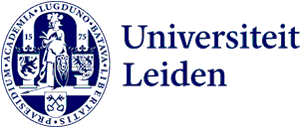Admission Requirements
Mathematics and Physics on Dutch high school VWO level
Description
The remarkable revolution in physics at the beginning of the twentieth century has influenced our worldview at all levels. In this first course on modern physics, we will introduce the counter-intuitive principles, relativity and quantum mechanics and relativity, that are the foundations of the laws of physics. Starting with Einstein’s insight that the speed of light is the same for all observers, even when they move with respect to each other, we deduce the theory of special relativity, with E=γmc^2 as it most well-known consequence. Next we show how the photo-electric effect indicates the existence of a smallest quantum of light. This makes clear that waves are particles as well, but the principles of quantum mechanics demand that the converse is also true. Particles are also waves, and this explains the stability of atoms. We explain the important role of quanta in the explanation of blackbody radiation, en the structure of the atomic nucleus. We conclude by describing how these new insights have shown that forces and particles are in essence the same thing, en how daring experiments such as the Large Hadron Collider at CERN test these amazing principles with astonishing precision. The outlook towards modern physics given in this course is the first step to the research frontier.
Course Objectives
After completing the course, the student will have a good overview of important developments in physics from the beginning of the twentieth century to the present. The student will be able to explain the basic principles of, and do simple sums on, the following subjects:
-Special Relativity (postulates of Einstein, time dilation, length Contraction, Lorentz transformations, Doppler shift, relativistic energy and momentum)
-Basis of Quantummechanics (photoelectric effect, De Broglie waves, wavefunction, uncertainty principle)
-Atomic structure (electron orbits and the Bohr atom)
-From single to many body physics (statistical distributions/Maxwell-Boltzmann, the ideal gas, blackbody radiation and Planck)
-Nuclear structure (binding energy, liquid-drop model, radioactive decay, nuclear reactions)
-Elementary Particles (forces and particles, the standard model, relativistic collisions)
Timetable
In MyTimetable, you can find all course and programme schedules, allowing you to create your personal timetable. Activities for which you have enrolled via MyStudyMap will automatically appear in your timetable.
Additionally, you can easily link MyTimetable to a calendar app on your phone, and schedule changes will be automatically updated in your calendar. You can also choose to receive email notifications about schedule changes. You can enable notifications in Settings after logging in.
Questions? Watch the video, read the instructions, or contact the ISSC helpdesk.
Note: Joint Degree students from Leiden/Delft need to combine information from both the Leiden and Delft MyTimetables to see a complete schedule. This video explains how to do it.
Mode of instruction
See Brightspace
Assessment method
Written exam with open questions
(optional) homework assignments
The exam consists of two parts. The grade of the first midterm test counts for 30% of the final grade, the remaining 70% is accounted for by the exam at the end of the course. The material of the exam is largely about the second part of the course material.
After the exam, there is one more opportunity (in the same academic year) to take a resit on the entire material. In this case, the test grade and the homework bonus are canceled and the final grade is equal to the exam grade. There is no possibility to resit the midterm test and the homework separately.
Reading list
H.D. Young, R.A. Freedman, University Physics; Pearson; 15th ed. (2019)
Registration
As a student, you are responsible for enrolling on time through MyStudyMap.
In this short video, you can see step-by-step how to enrol for courses in MyStudyMap.
Extensive information about the operation of MyStudyMap can be found here.
There are two enrolment periods per year:
Enrolment for the fall opens in July
Enrolment for the spring opens in December
See this page for more information about deadlines and enrolling for courses and exams.
Note:
It is mandatory to enrol for all activities of a course that you are going to follow.
Your enrolment is only complete when you submit your course planning in the ‘Ready for enrolment’ tab by clicking ‘Send’.
Not being enrolled for an exam/resit means that you are not allowed to participate in the exam/resit.
Contact
Lecturer: Dr.ir. B.J. Hensen
Remarks
Software
Starting from the 2024/2025 academic year, the Faculty of Science will use the software distribution platform Academic Software. Through this platform, you can access the software needed for specific courses in your studies. For some software, your laptop must meet certain system requirements, which will be specified with the software. It is important to install the software before the start of the course. More information about the laptop requirements can be found on the student website.
